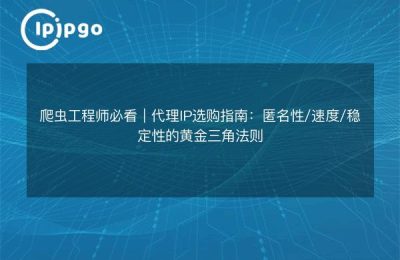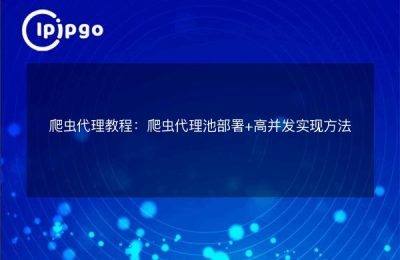
When performing data collection (Web Scraping), using proxy IP can effectively avoid being blocked by the target website and improve the collection efficiency and success rate. This article will give you a detailed introduction on how to use proxy IP for data collection crawling and provide some practical tips and precautions.
Why do I need to use a proxy IP for data collection?
In the process of data collection, frequent requests will attract the attention of the target website, resulting in the blocking of the IP address. Using a proxy IP can help you bypass these restrictions and simulate access by multiple users, thus increasing the success rate of data collection.
Choose the right proxy IP
There are several factors to consider when choosing a proxy IP:
- Stability:Choose a stable proxy IP to ensure that you will not be disconnected frequently during data collection.
- Speed:High-speed proxy IPs can improve the efficiency of data collection.
- Anonymity:Proxy IPs with high anonymity can hide your real IP address from being detected by target websites.
- Location:Choosing the right proxy IP according to the geographic location of the target website can improve the access speed and success rate.
Configure Proxy IP
Depending on the programming language and data collection framework you are using, there are different ways to configure the proxy IP. Here are a few common ways to configure it:
1. Using Python and the Requests library
import requests
proxies = {
"http": "http://your_proxy_ip:port",
"https": "https://your_proxy_ip:port"
}
response = requests.get("http://example.com", proxies=proxies)
print(response.content)
2. Use of Python and Scrapy frameworks
Configure the agent in the settings.py file of the Scrapy project:
# settings.py
DOWNLOADER_MIDDLEWARES = {
'scrapy.downloadermiddlewares.httpproxy.HttpProxyMiddleware': 110,
'your_project.middlewares.ProxyMiddleware': 100,
}
# middlewares.py
class ProxyMiddleware(object).
def process_request(self, request, spider).
request.meta['proxy'] = "http://your_proxy_ip:port"3. Using JavaScript and Puppeteer
const puppeteer = require('puppeteer');
(async () => {
const browser = await puppeteer.launch({
args: ['--proxy-server=http://your_proxy_ip:port']
});
const page = await browser.newPage();
await page.goto('http://example.com'); const content = await page.content('http://example.com')
const content = await page.content(); console.log(content); console.log(content); console.log(content)
console.log(content);
await browser.close(); })(); const page = await browser.goto(''); await page.content = await page.content(); console.log(content); await browser.close(); }
})().Rotation of proxy IPs
To avoid frequent use of the same proxy IP that leads to banning, you can use the strategy of rotating proxy IPs. You can manually maintain a pool of proxy IPs or use the Rotate Proxy IP feature provided by some professional proxy IP service providers.
caveat
When using proxy IPs for data collection, you also need to pay attention to the following points:
- Legality:Ensure that your data collection behavior complies with the terms of use of the target website and relevant laws and regulations.
- Frequency control:Reasonably control the frequency of requests to avoid overstressing the target site.
- Error handling:Handle a variety of possible error situations, such as proxy IP failures, request timeouts, etc.
summarize
Using proxy IPs for data collection is an effective way to improve the success rate and efficiency. By choosing the right proxy IP, configuring the proxy IP correctly, and rotating the proxy IP reasonably, you can accomplish the data collection task better.
I hope this tutorial will help you better understand and use proxy IPs for data collection crawlers. If you have any questions or suggestions, feel free to leave them in the comments section.








